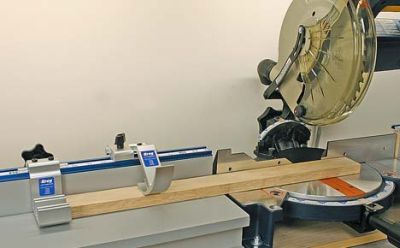Edge-Banding Issues with Laminated Doors
Minor thickness variations in shop-laid laminate doors cause the edgebander to scuff the laminate. What's the fix? May 10, 2005
Question
We do a lot of pre-laminated doors, which we glue up full sheets manually, roll it by hand, and the cut doors out of it. When the doors go to be edgebanded some get damaged by the scrapers because of the unevenness in the thickness of the material. If I roll the edges of the door with a steel roller before I band it, this damage doesnít occur. So I donít really want to have to roll all the doors by hand. Would a pinch roller solve this problem? Does anyone else have this problem? Any ideas where to get a good small pinch roller or other solutions will be greatly appreciated.
Forum Responses
(Laminating and Solid Surfacing Forum)
From contributor A:
A pinch roller won't make much difference. When you use contact cement as an adhesive, the edges will be irregular and the edgebander will scuff the laminate at the high spots. We've fought that battle and lost. We own 3 pinch rollers. These are your choices:
1. Outsource your panels to someone who uses PVA glue and a press.
2. Set your trimmers to leave a little extra, and finish trimming the doors manually.
From contributor B:
I agree - I believe that if you add your excess labor, higher cost adhesive, and waste to the cost of the core and overlay material, an outsourced panel from a supplier with a press will also save you considerable money.
From contributor C:
We set the trimmer to leave the banding a little high, and finish the doors by hand with a cabinet scraper. Itís a little more work but no more marred faces. For larger jobs, anywhere there are 8 or so sheets of material in door faces, we'll buy the panels out pre-laid from a panel supplier.
Your sheet goods distributor - whoever sells you melamine and board - probably has a press or a customer with a press. That's a good way to save on shipping - order your pre-laid material at the same time you order the rest of your material.
From the original questioner:
I would almost agree, except for the fact that if I roll the edges myself and give it all Iíve got, then the doors come out perfectly, with no clean up required.
Isnít this why we fork out large sums of money for a machine bander in the first place, to take out the manual labor? The reason we donít outsource is we're in Alaska, and we have enough trouble just getting the laminate here in time.
I forgot to mention, itís mainly 3mm PVC with 1/8 inch round over top and bottom. When I use thin tape on doors I tilt the trimmers 15 degrees and donít get the damage, but I canít do this with 3mm.
From contributor A:
Consider buying a used cold press for your shop. They are not expensive, and you can roll PVA adhesive with a hand roller. If you want to spend a few bucks, look at a Joos hot press and a Black Brothers glue spreader. They are also frequently available as used machinery.
From contributor D:
Look into a vacuum bag. When we cannot get panels laid up in time we bag them. You can fit several sheets in at a time it all depends upon how fast you can roll the glue as to how many sheets you can get into the bag prior to the glue getting too dry. You'll find the cost of a vacuum press very reasonable and it will allow you to do many other things besides panels.
From contributor E:
If contact adhesive is used I roll everything with a 100 lb roller and let dry 3 days if it has to be banded. I quickly switched to PVA glue and a $2000 pinch roller which completely solved the problem. I dead stack the rolled PVA material overnight and it always seems to run great thru the bander. Add 3 sheets of 1-1/8 core to top last sheet for last press.
